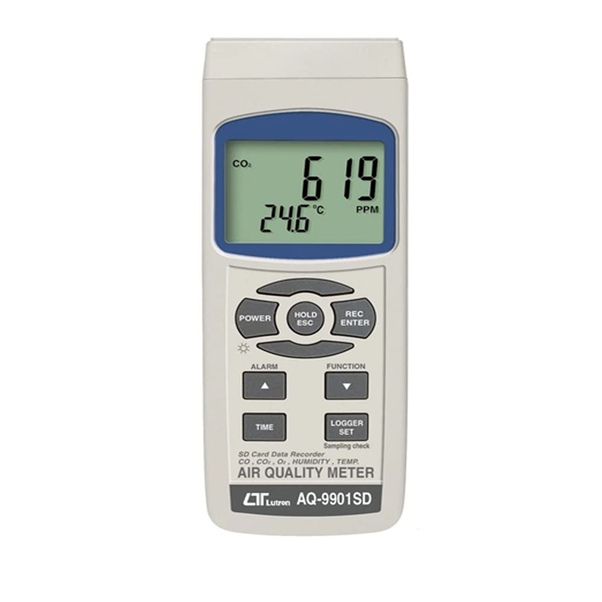A device used to measure and monitor the quality of the air in a particular place is an air quality metre, often known as an air quality monitor or AQM. It aids in determining the amount of different gases and contaminants in the air, giving important information about the general level of air quality. To ensure that the air we breathe is secure and wholesome, these devices are frequently utilised in residences, workplaces, commercial spaces, and public areas. An air quality meter, also known as an air quality monitor or AQM, is a device used to measure and monitor the quality of the air in a specific environment. It helps to assess the concentration of various pollutants and gases in the air, providing valuable information about the overall air quality. These devices are commonly used in homes, offices, industrial settings, and public spaces to ensure the air we breathe is safe and healthy.
Key features of an air quality meter:
- Sensors: Air quality meters typically come equipped with various sensors to detect different types of pollutants. Common sensors include:
- Particulate Matter (PM) sensor: Measures the concentration of airborne particles of different sizes, such as PM1.0, PM2.5, and PM10. These particles can be harmful when inhaled into the respiratory system.
- Gas sensors: Detect and measure the concentration of gases like carbon dioxide (CO2), carbon monoxide (CO), ozone (O3), nitrogen dioxide (NO2), sulfur dioxide (SO2), and volatile organic compounds (VOCs). Elevated levels of these gases can lead to health problems and air pollution.
- Display and User Interface: AQMs usually have an easy-to-read display that shows real-time measurements of the detected pollutants. The user interface allows users to access different functions, set alarms, and view historical data.
- Data Logging: Many air quality meters have data logging capabilities, which means they can record air quality measurements over time. This is particularly useful for tracking changes in air quality and identifying trends or potential issues.
- Connectivity: Some advanced air quality meters offer connectivity options, such as Wi-Fi, Bluetooth, or USB, allowing users to sync data with smartphones, computers, or cloud-based services for further analysis and monitoring.
- Portability: Depending on the model, air quality meters can be portable and handheld, suitable for personal use and on-the-go monitoring, or stationary units intended for fixed installations in buildings or industrial sites.
Importance and Applications:
- Health and Safety: Monitoring air quality is crucial for safeguarding public health and the well-being of individuals. Poor air quality can exacerbate respiratory and cardiovascular conditions and lead to various health problems.
- Environmental Monitoring: Air quality meters help in monitoring and assessing air pollution levels in different locations, providing data for environmental agencies to take appropriate actions for pollution control.
- Workplace Safety: In industrial settings, air quality meters are used to ensure that workplace air is within acceptable safety standards, protecting workers from harmful gases and particles.
- Indoor Air Quality (IAQ): For homes and offices, air quality meters are valuable tools for assessing indoor air pollution and ensuring a healthy living and working environment.
Research and Policy Development: Air quality data collected by these devices contributes to scientific research, policy-making, and initiatives aimed at improving air quality and reducing pollution.
It’s important to note that the accuracy and reliability of air quality meters can vary based on the quality of sensors and calibration. When choosing an air quality meter, it’s essential to consider the specific pollutants you want to monitor and select a device that meets your needs and budget. Additionally, regular maintenance and calibration are necessary to ensure the accuracy of the measurements over time.
An air quality meter’s essential attributes are:
Carbon dioxide (CO2), carbon monoxide (CO), ozone (O3), nitrogen dioxide (NO2), sulphur dioxide (SO2), and volatile organic compounds (VOCs) are just a few examples of the gases that can be detected and measured by gas sensors. These gases can cause air pollution and health issues at high concentrations.
Display and User Interface: Real-time measurements of the pollutants that are identified are typically shown on an AQM’s simple-to-read display. Users can access many features, set alerts, and view historical data through the user interface.
Data logging: A lot of air quality metres have the ability to log data, allowing them to keep track of air quality readings over time. This is especially helpful for tracking modifications to air quality and seeing patterns or possible problems.






